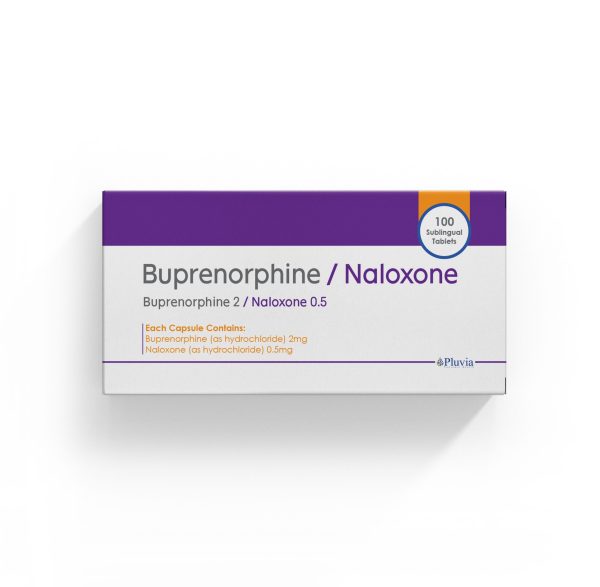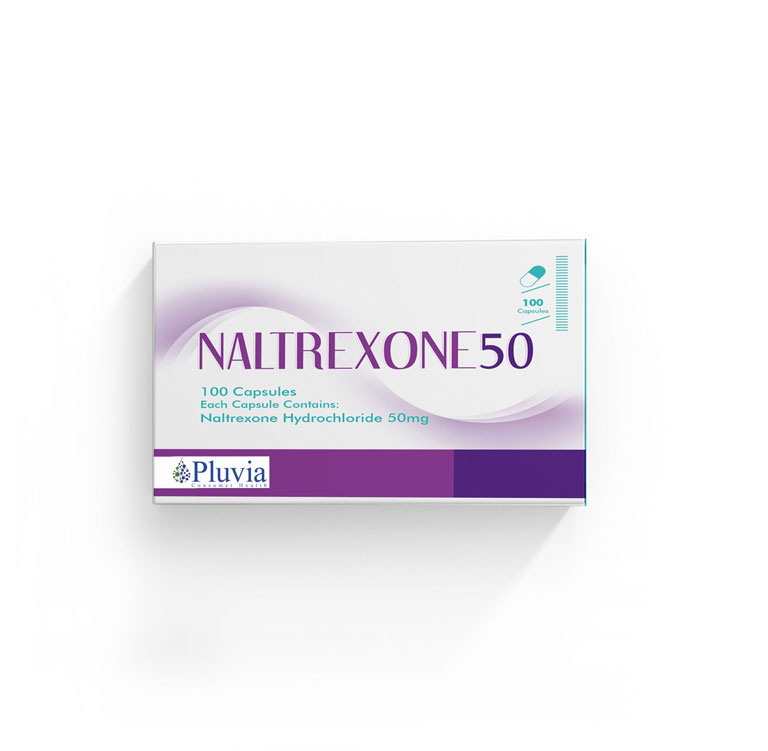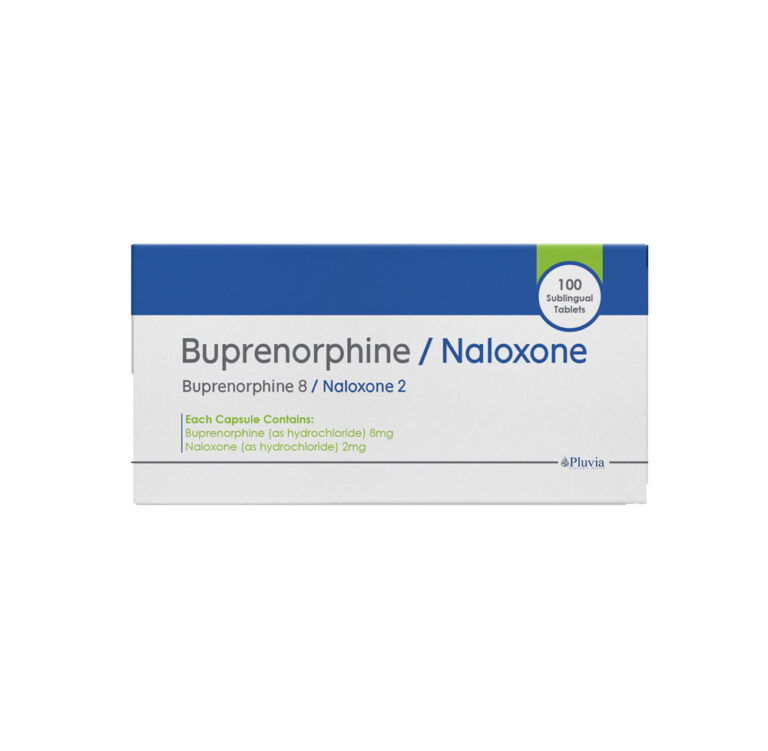Buprenorphine 2 mg / Naloxone 0.5 mg
Sublingual Tablet
Box (100 tablets)

Knowing about parts of Buprenorphine 2 mg /Naloxone 0.5 mg helps to have a better choice. So, regarding the material, we’ll take a look at sources below:
Buprenorphine is an Agonist-Antagonist Opioid analgesic that displays high binding affinity but low intrinsic activity at the µ receptor. It functions as an antagonist at the 6 and K receptors and for this reason, is referred to as a “mixed agonist-antagonist.” Although buprenorphine is used as an analgesic, it can antagonize the action of more potent µ agonists such as morphine.
Naloxone is present in this combination tablet to discourage misuse. Naloxone is a very strong blocker of µ opioid receptors and will precipitate people into opioid withdrawal if drug misusers attempt to convert the tablet into an injectable form. Naloxone has poor absorption with taken sublingually, so has no pharmacological effect.
Therapeutic Fields of Buprenorphine 2 mg /Naloxone 0.5 mg


Treatment of Opioid dependence
0.5 million
Worldwide deaths are attributed to drug use.
More than 70%
of these deaths are related to opioids
More than 30%
of those deaths caused by opioid overdose.


Dosing of Buprenorphine 2 mg /Naloxone 0.5 mg
Based on clinical guidelines for the use of Buprenorphine 2 mg /Naloxone 0.5 mg in the Treatment of Opioid Addiction, titrate gradually due to patient response and adverse effects.
Administration
The tablet should be placed under the tongue until dissolved (can take up to 10 minutes to fully dissolve); should not be cut, chewed, or swallowed.
Contraindication
Hypersensitivity to buprenorphine or any component of the formulation, significant respiratory depression; acute or severe asthma in an unmonitored setting or the absence of resuscitative equipment; GI obstruction, including paralytic ileus (known or suspected).
Warning and Precautions
Use with caution in patients with hypovolemia, cardiovascular disease, hypokalemia, hypomagnesemia, clinically unstable cardiac disease, moderate hepatic impairment, renal impairment, compromised respiratory function, adrenal insufficiency, biliary tract dysfunction, ileus or bowel obstruction, acute ulcerative colitis and active Crohn’s disease, delirium tremens, head injury, intracranial lesions or elevated intracranial pressure (ICP), Obesity, prostatic hyperplasia, toxic psychosis, history of seizure disorders, sleep-disordered breathing, thyroid dysfunction, cachectic or debilitated patients.
Pregnancy and Breastfeeding
Buprenorphine crosses the placenta and is present in breast milk; the risk or benefit of treatment to the mother and infant should be considered.
Drug Interactions of Buprenorphine 2 mg /Naloxone 0.5 mg
Opioid Agonist and antagonists, Cyp3A4 inducers and inhibitors, CNS Depressants
Side Effects
>10%: Diaphoresis, Abdominal pain, nausea, Infection, Headache, insomnia
1% to 10%: Constipation, vomiting
<1%: Opioid withdrawal syndrome, Respiratory depression
Clinical Study
References
Clinical Study about Buprenorphine 2 mg /Naloxone 0.5 mg
CRAVING AS A THERAPEUTIC TARGET IN Opioid Use Disorder (OUD)
Based on a randomized controlled trial in patients with opiate dependence, Self-reported opiate craving was assessed as the peak craving during the prior 24 hours measured on a 0-100 mm visual analog scale. Statistically significant reductions in craving were reported for comparisons between BUP and BUP-naloxone groups versus placebo at all post-baseline time points.
PluviaEndo medicinal products with very high quality and also with a wide variety of indications, to improve the quality of people’s health, are presented in two forms, active pharmaceutical ingredient and finished dosage form.
We understand the complexities and challenges you face in the healthcare industry. That’s why we’re dedicated to providing innovative solutions and insightful knowledge to help you achieve your goals.
Your input is crucial in helping us understand your needs and deliver the most relevant support:







